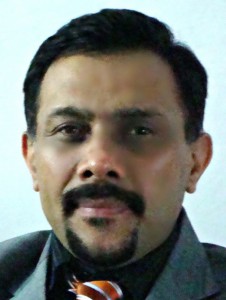Since health education is the base of the modern healthcare pyramid, eradicating the silent public health epidemic of health illiteracy is the most cost-effective means to reduce the healthcare burden of developing nations, while moving the populations to greater self-reliance
By Vipin Varma
Principal Advisor (Health Affairs) & Founder
THOT Consultants – Ideas Without Borders
Treating the Silent Epidemic: Health Literacy for All
Background
Health literacy, defined as the ability to seek, process and apply health related information and knowledge is an essential public health investment. My twenty seven years of clinical, management and entrepreneurial journey as a health advocacy communications consultant in India and abroad has convinced me that healthcare literacy across all stakeholders is an essential, scalable, universal, valuable product-service.
Since health education is the base of the modern healthcare pyramid, eradicating the silent public health epidemic of health illiteracy is the most cost-effective means to reduce the healthcare burden of India*, while moving the population to greater self-reliance. Health literacy asymmetry is one of the key fundamentals affecting equity of healthcare and sustainable development. Even as a policy level initiative, this gap needs to be erased first and foremost, while allocating adequate and enhanced budgets for health literacy, education and promotion. In order to truly empower our citizens for self-care, we must provide them complete health literacy in keeping with the universal declaration of human rights and the right to health, as it is one of the main determinants and entitlements of healthcare.
For a perspective, both the USA and China now see it as a public health issue to be managed based on epidemiologic principles & have developed a National Action Plan to Improve Health Literacy. Only 12% of the US population is supposed to be proficient in health literacy and the US projections are a potential saving of almost $236 Billion per annum or up to $ 3.6 Trillion over a decade, as a result of enhanced public health literacy. Given our overall literacy standards, India can therefore, also greatly benefit from a dedicated Health Literacy Program, at various levels of government.
Need of the Hour
‘Prioritize the base of the healthcare pyramid’
Health literacy is the fertile soil on which we must cultivate our citizen-centric public & private sector healthcare systems and institutions. Piecemeal, sporadic IEC (Information, Education, Communication / BCC (Behavior Change Communication) components of various vertical programs have not been able to achieve a society-wide competence in health literacy and shall therefore, require an integrated program approach to achieve short, mid and long-term outcomes of public self-reliance in wellness & healthcare. This has been validated by secondary research and interactions with senior key stakeholders across the healthcare development spectrum.
Way Forward
The Health and Family Welfare Ministries and Departments across national, state and local governments should lead and orchestrate a branded total health literacy program, integrating with the relevant departments like education, women-child development, social welfare, labor, consumer affairs, information-broadcasting, pharmaceuticals, rural and urban development, as necessary. Strategic partnerships with civil society and corporate social responsibility can also be leveraged later.
Monitoring and robust evaluation (M&E) should be built into the plans, to ensure tracking of the positive health outcomes and documentation of the high cost-effectiveness of this integrated approach, as promised by the global evidence base on health literacy. Convergence and social accountability is essential to sustainably scale-up this program. This can also integrate well with both Digital India & Skill India initiatives and at least 6,50,000 jobs** can be created nationwide in this domain, at a modest estimate of 100 health educators per district.
Suggested Policy
Given the silent epidemic prevalence of health illiteracy & the current strategic imperative of public self-reliance for healthcare, we should ideally provision about 5-10% of the healthcare budget at each level of government for dedicated health literacy activities, to achieve optimal impact.
Even for a modestly literate population, the modern healthcare pyramid with health education as its base, suggests a public health literacy program should be allocated at least 5% of the healthcare budget. The minimum spend should be enshrined in policy guidelines at all levels and grantees should also be strongly encouraged to spend this well. This relatively small but strategically significant shift in priorities, can have strong cascade effects on the entire health resource pyramid and can even invert it, if executed well.
—————————————————–
*The Health Literacy program concept highlighted in this article is valid for any developing nation globally and I have just written it with my country in context, but I am certain most developing and many developed countries too, still do not attach sufficient significant importance to Health Literacy across the public, social and private health sectors.
**This is a conservative estimate and can vary with the strategic intent and number of districts in the developing country under consideration.
